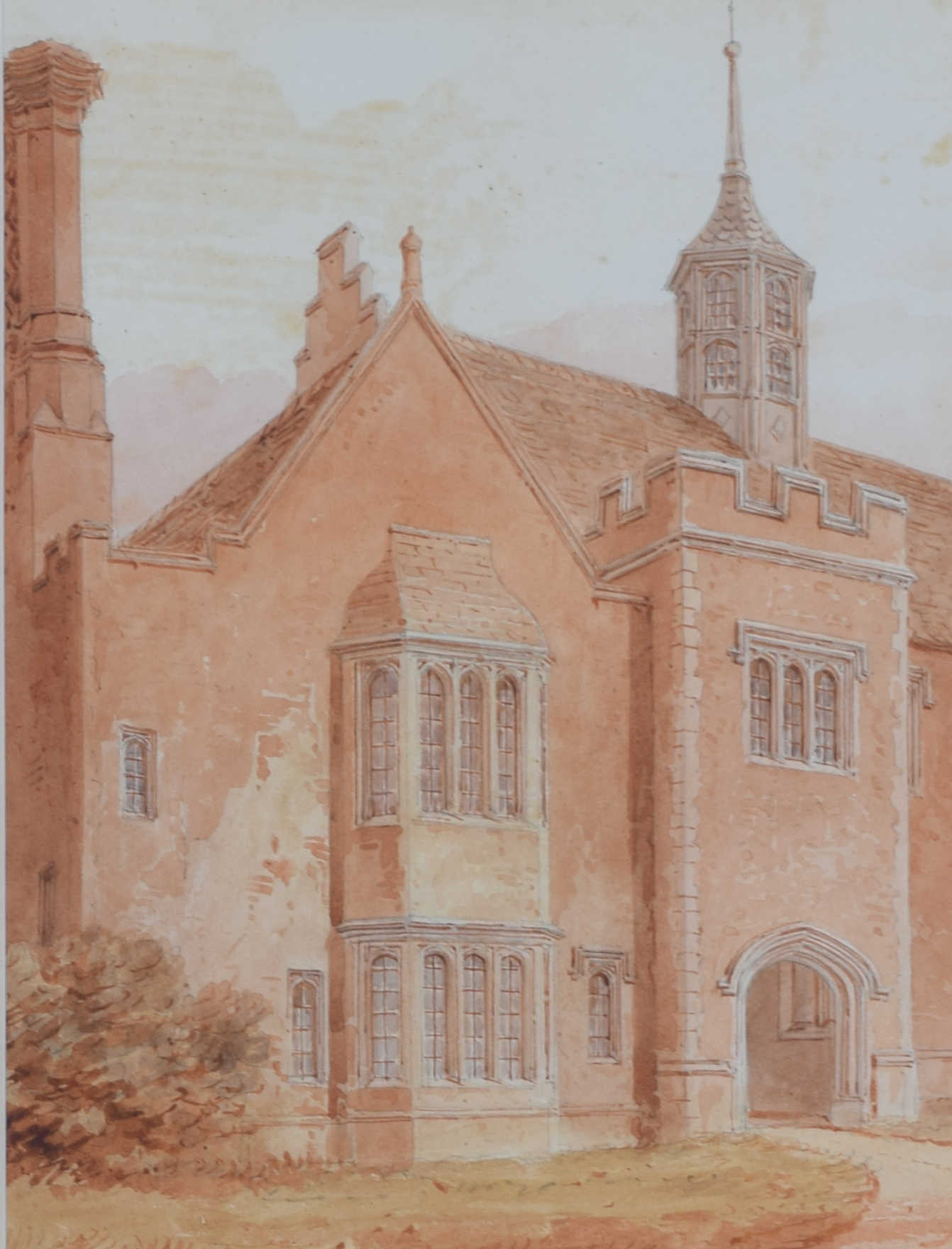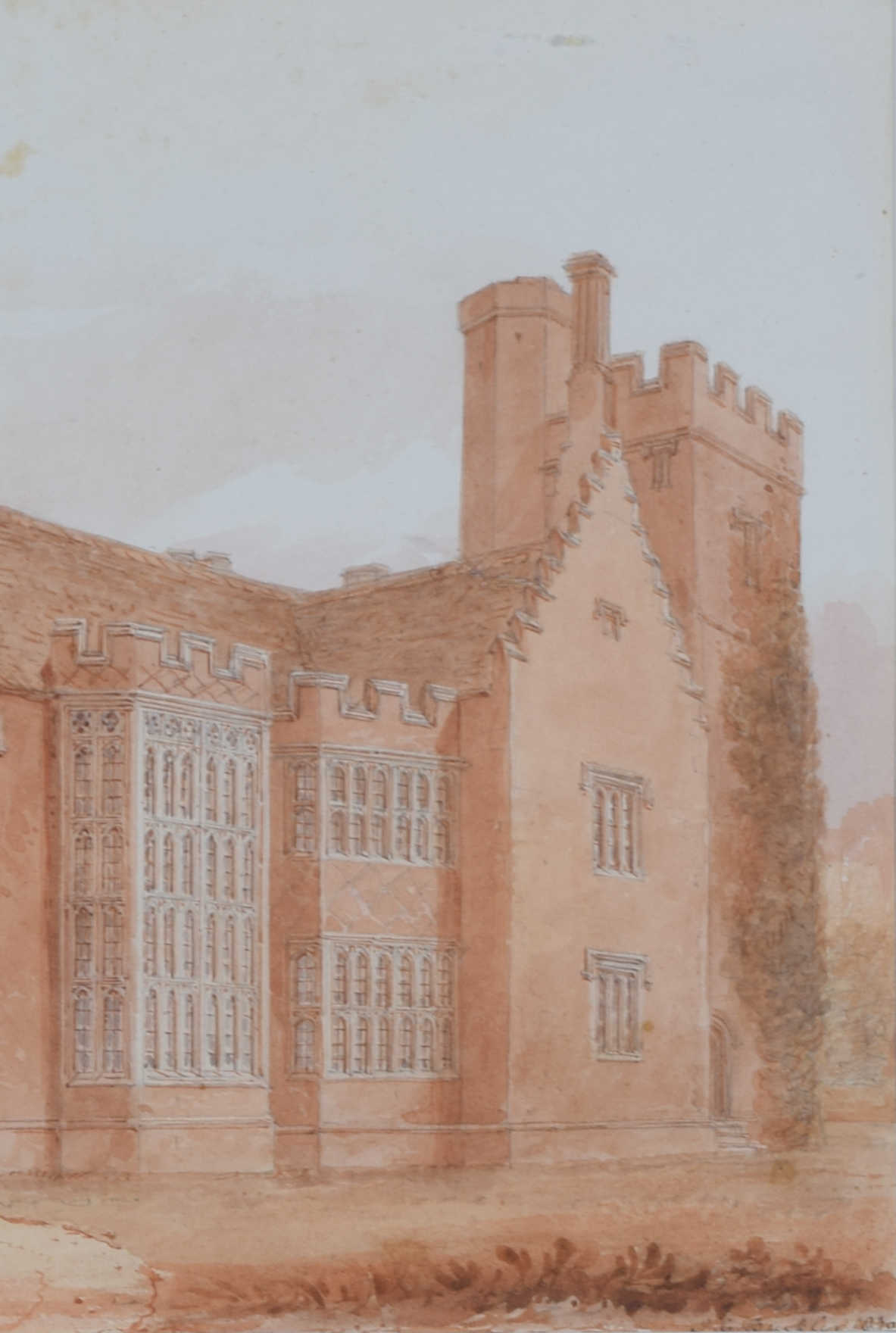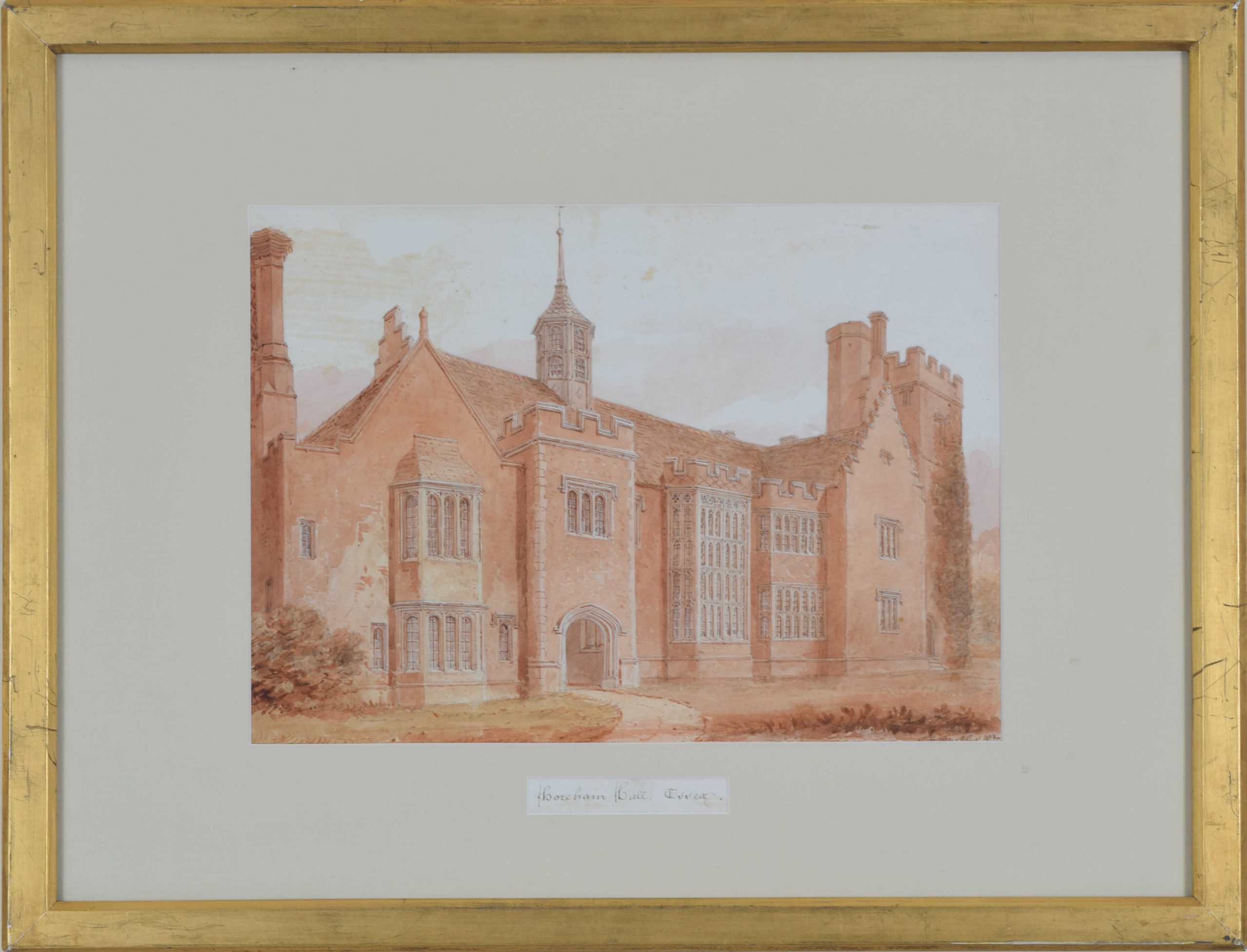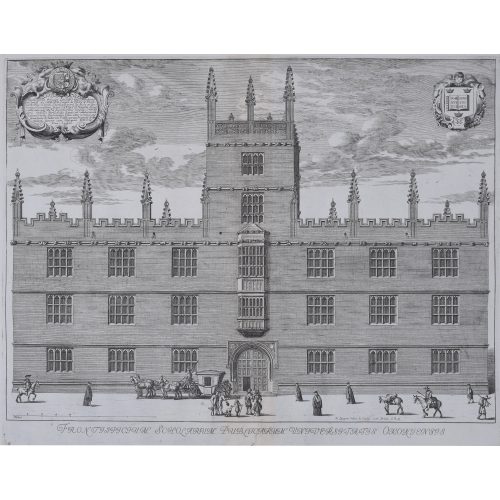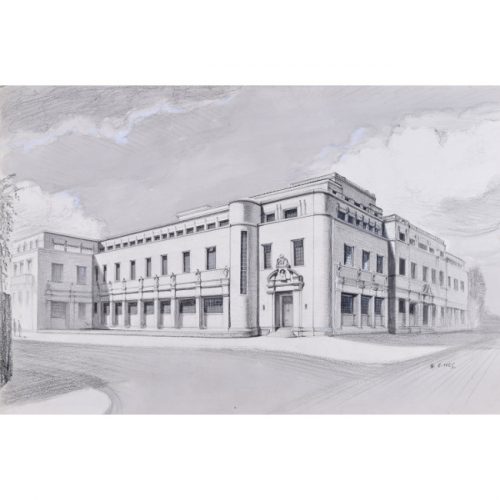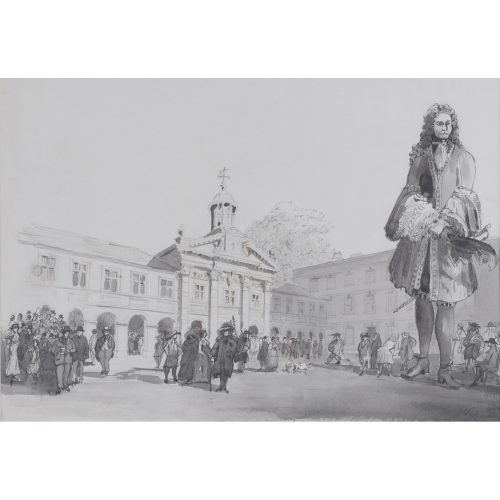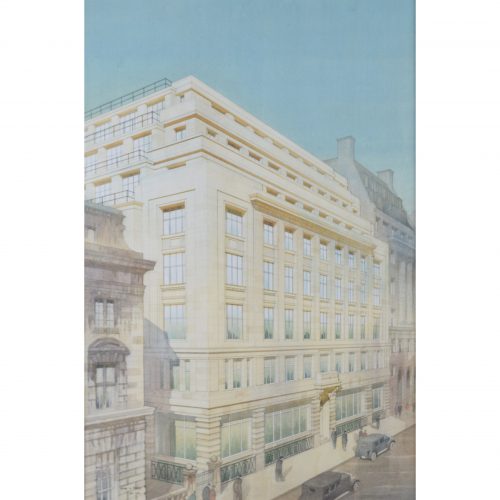John Chessell Buckler (1793 – 1894)
Horham Hall, Essex (1830)
Watercolour
25 x 34 cm
Signed and dated lower right; titled below.
Horham Hall was built in Thaxted, Essex by Sir John Cutte in the early sixteenth century. The original hall was a timber-framed moated manor house built circa 1470, but it was largely demolished by Cutte, who built the present house between 1510 and 1515. Cutte was under-treasurer in the households of Henry VII and Henry VIII. The mansion was built in brick in two storeys in a quadrilateral layout with a gatehouse and incorporated some elements of the former building.
The house was visited three times by Elizabeth I as the guest of Sir John Cutte. It is believed that the Tower was built for her to watch the local hunt. It was while staying at Horham in 1578 that the Queen received the envoy of the Duke of Alençon proposing marriage.
John Chessell Buckler was a British architect, the eldest son of the architect John Buckler. His work included restorations of country houses and at the University of Oxford.
Buckler received art lessons from the painter Francis Nicholson. He began working for his father’s architectural practice in 1810, and ran it from 1830 onwards with his younger brother George. They worked in partnership until 1842.
Buckler did a lot of work in Oxford, carrying out repairs and additions to St. Mary’s Church, and Oriel, Brasenose, Magdalen, and Jesus Colleges. He also restored Oxburgh Hall, Norfolk, and Hengrave Hall, Suffolk, and designed Dunston Hall, Norfolk, and Butleigh Court in Somerset.
In 1836 he came second, behind Charles Barry, in the competition to rebuild the Palace of Westminster following its destruction by fire.
Buckler’s writings included the text accompanying his father’s engravings of Views of the Cathedral Churches of England and Wales (1822). In 1823 he published ‘Observations on the Original Architecture of St. Mary Magdalen College, Oxford’, in which he expressed his hostility towards changes in the quadrangle of Magdalen College. Some of his later writings, such as ‘A History of the Architecture of the Abbey Church of St Alban’ (1847), were written in collaboration with his own son, Charles Alban Buckler. He wrote a further polemical work, ‘A Description And Defense Of The Restorations Of The Exterior Of Lincoln Cathedral’ (1866), a scathing response to accusations that, in capacity as honorary architect to Lincoln Cathedral, he had overseen a damaging restoration involving the ‘scraping’ of the cathedral fabric.
He died at the grand old age of 100 in 1894.
Condition: good. Some spots to the sky, as visible in photograph.
If you’d like to know more, please email info@manningfineart.co.uk or call us on 07929 749056.


